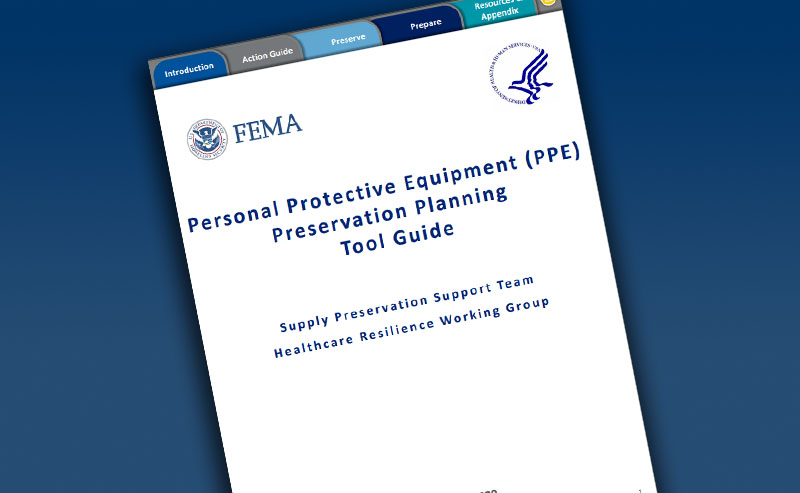Months back, at the onset of the COVID-19 pandemic, there was widespread concern about the availability of Personal Protective Equipment, or PPE. Thankfully, companies worldwide quickly stepped up, even modifying their operations to produce masks, gloves, gowns, and other essential items. But now that the number of COVID cases is steadily on the rise, and the regular flu season is underway, many are feeling uneasy (again) about the quantity and quality of PPE on hand.
Enter the PPE Preservation Toolkit
To aid PPE-using organizations in their planning strategies and to mitigate PPE shortages, the Department of Health and Human Services’ Healthcare Resilience Working Group recently made available an online PPE Preservation Toolkit. It’s the only tool specifically designed for planning purposes by providing estimates of the impact of implemented preservation strategies on PPE burn rates and supply longevity.
In a nutshell, the toolkit provides “estimates of the value of implementing preservation actions to reduce (use of), to reuse, or to repurpose PPE, as described in the Coronavirus (COVID-19) Pandemic: Personal Protective Equipment Preservation Best Practices fact sheet, in conventional, contingency, or crisis capacity conditions (as defined in the Centers for Disease Control and Prevention’s Optimizing Supply of PPE and Other Equipment during Shortages).”
Users simply download the toolkit’s spreadsheet and enter data on their current or prospective PPE use practices to better understand supply duration changes with different scenarios. This may include identification of staff categories requiring PPE, the number of employees using PPE, and estimation of the daily PPE consumed per staff member by staff category. It might also involve practices of PPE use for patients or work cycles, and the proportion of patients or facility staff to whom the practices apply.
As explained in the toolkit’s fact sheet, analysis and output include the following elements:
- Estimation of reduction factors associated with each PPE preservation strategy for each PPE type.
- Estimation of overall reduction factors when preservation strategies are implemented.
- Estimation of duration of specified supply amounts, displayed in tables and graphs.
Best of all, the information needed to implement and manage an effective PPE preservation strategy can be gained in a very short time—about 30 minutes for orientation and preparation to use the tool, and only one to three hours to enter the information. It’s important to note, however, that the actual time associated with using the tool will vary depending on an organization’s size and complexity as well as its users’ familiarity with various concepts.
Time Really is of the Essence
There are now more than 11.6 million cases of COVID-19 in the U.S., and according to the Centers for Disease Control’s (CDC’s) Weekly Influenza Report, one state, Iowa, is already seeing a high number of seasonal flu cases.
Now, more than ever, it is crucial for PPE-using organizations to have ample resources to protect staff, patients, and others. See the PPE Preservation Planning Toolkit Fact Sheet for more information and links to the other elements of the Toolkit, the Guide and the Tool.






